The magic, majesty and lore of the Northwest’s most iconic fish, the spring chinook, cannot be overstated. They are singularly unique in so many ways.
“Springers” as they’re often referred to, are arguably the best eating salmon on the planet. The only real argument is with those that haven’t actually eaten one, if you have, there’s no argument as to “best”.
Like gold, there’s a certain fever associated with these fish. They show sometime in January which is evidenced in the first fish of the season that’s landed, usually in the Willamette. It always makes the news. No other fish in the region gets the kind of press these fish do. Stalwart anglers begin their search in January, a few more in February and lots more in March all hoping to connect with an early returning spring salmon. Most know the peak of the run won’t show until sometime late in April but they put their time in anyway banking on their herring brine or flasher that’s been a fish catcher in the past.
Luck is a powerful tool early in the season but even more powerful is time. These early fish often cost anglers a hundred hours or more before they connect. That number will drop precipitously by late April to 40 or so hours a fish…the biologists refer to this as CPUE (Catch Per Unit Effort). That means a boat of 5 anglers fishing an 8 hour day will likely connect with at least one of these fish. Others of course upset this equation catching more than their fair share in a day on the water.
The Columbia is the superhighway for these salmon. It gathers up all the springers to be dispersed throughout the entire basin from Astoria into Idaho and all points in-between. Some will peel off at the Cowlitz, a big slice favor the Willamette River where the run will be picked apart by the Clackamas, Mollala, Santiam, McKenzie and others.
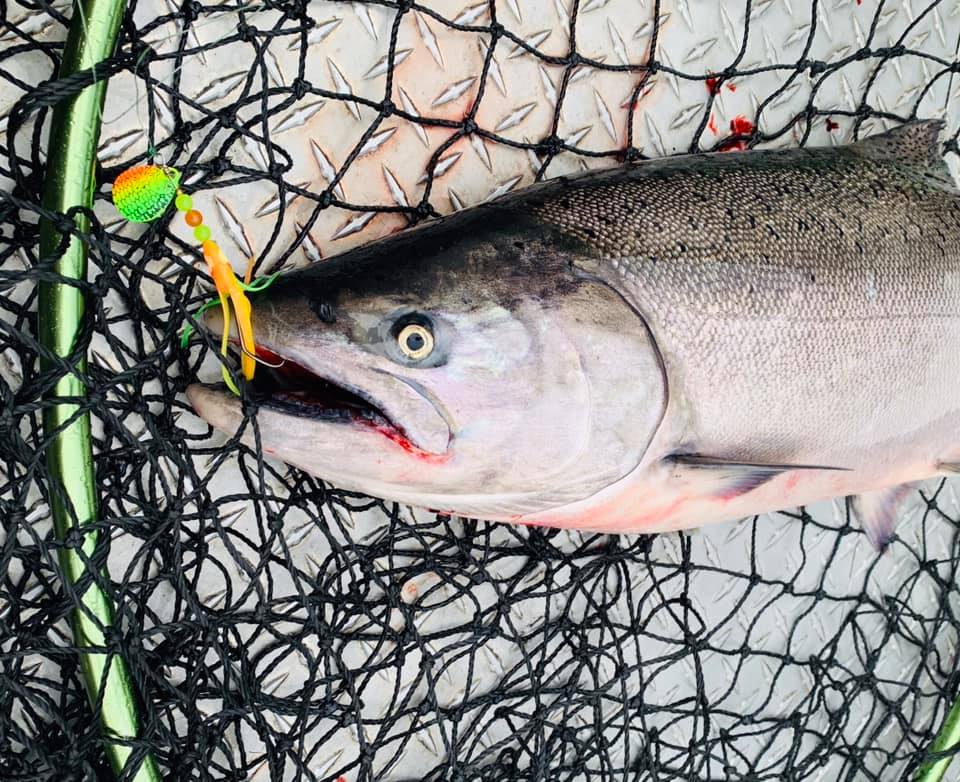

And even though some of the strains of spring chinook look slightly different, they all share one unique characteristic. Springers show in the spring and early summer and don’t spawn until sometime in the fall. To survive requires an exceptionally high fat content to sustain them over months of no food. That’s right, once in freshwater salmon stop feeding and go on a prolonged hunger strike, fasting until they spawn and inevitably die.
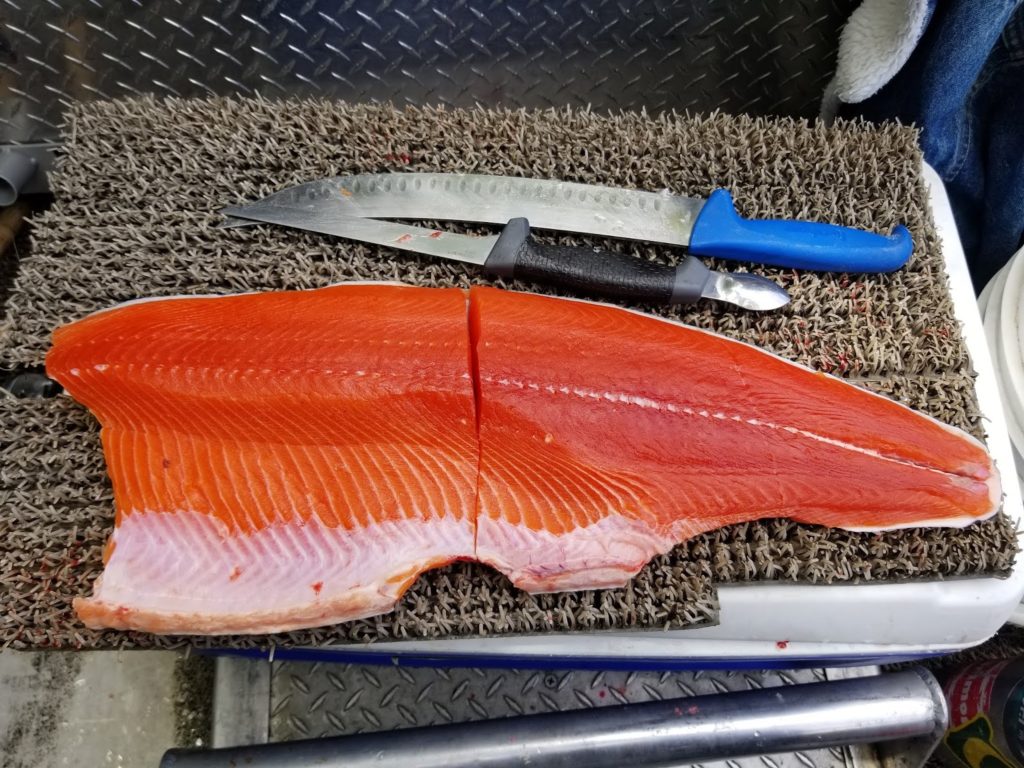

That’s another trait common to all salmon. They all die when they return from the ocean. If the predators, dams and environmental conditions don’t do them in, the spawn will.
One of the distinct high points for a Columbia Basin spring chinook is their run timing matches up nicely with the return of Columbia River smelt. Smelt enter the river late in January, through February and into March. They are little fat-bombs with fins, oily and surely a treat for early returning spring chinook. It’s the last picnic they’ll enjoy before the rush of freshwater shuts down their urge to feed. Still it’s a bodacious last supper and probably the reason these early Springers are so delicious and command such a high market price. If you could find them in the store they’ll be as much as $60 or $70 a pound. A month later the price will level off at $50 a pound for a fresh fillet and $100 a pound if it’s smoked…but good luck finding any commercially-available smoked springer, that’s a rarity unless you sportfish.
The run will persist into June and then magically, around the middle of the month, they become “summer chinook”. Yes, most of the mid-June fish are indeed summer chinook, another distinct strain of chinook but there’s still a few springers mixed in for good measure.
A growing fraternity of anglers fish the lower-Willamette daily through June and most of July catching salmon every day. Unlike any other salmon fishery in the region this one just keeps chugging along consuming nearly 7 months, four of those months deliver some pretty good fishing opportunity. By comparison, the iconic Buoy 10 fishery is about a month long fishery for Chinook, maybe two months of good fishing for silvers and it’s done.
When you have a fishery that spans so many months the techniques and tactics evolve with the changing weather and water conditions.
Early in the season it’s a bait show. Herring tops the list. Cured prawns, sand shrimp are used as well, and little later in the season, cured salmon eggs.
Just like most fisheries there are no absolutes. Guides like Pro Escabedo are catching springers on spinners early in the season. One of my office colleagues plunked a Spin-N-Glo with no bait on it from the bank and caught one in March.
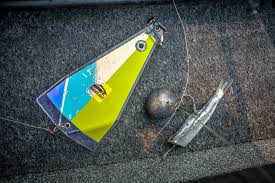

Wrapped Kwikfish work and so do wobblers but day-in and day-out in March, April and most of May, a brined cut-plug herring behind a triangle flasher is what most are using to catch salmon.
The Columbia is a fish factory. If spring chinook anglers could fish until the end of April in the Columbia the catch rates would be off-the-chart. Unfortunately, the river’s closed to salmon fishing by early April just for that reason.
Columbia basin salmon are some of the most studied fish stocks on the planet, they’re also some of the most tightly managed operating under strict Endangered Species Act (ESA) guidelines. Northwest salmon and steelhead anglers fish under carefully crafted conditions in an effort to conserve and hopefully restore these runs. The looming threat is that if these fisheries are mismanaged resulting in overharvest and violating the ESA, the federal government will step-in and manage these fisheries on our behalf. The collective wisdom is that if that happens there will likely be widespread closures, so we’re under the guidance of the States to manage these runs in a way that passes federal muster and allows for some kind of season.
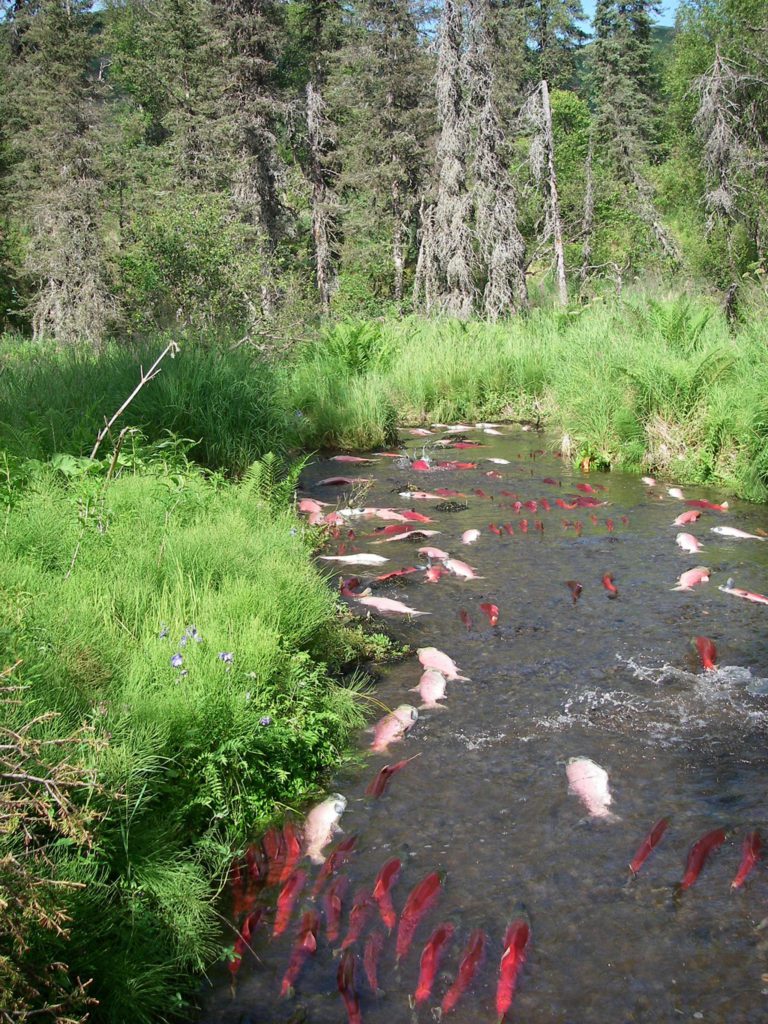

Years ago, I was involved in a pilot project to plant salmon carcasses in tributaries of Eagle Creek in the Clackamas basin. It was the first-ever project of its kind in Oregon. In places like Alaska where rivers freeze over in the winter time, the only significant food source is the flesh that’s shed from the decomposing salmon carcasses after the spawn. Research showed that marine isotopes from these carcasses could be found in the surrounding flora and wildlife. The entire ecosystem benefited, right along with the fish, from this food source.
Anyone that’s really immersed themselves in the issue of season-setting has a certain appreciation for the science that’s applied and the difficulty in managing these fisheries…starting with a crystal ball. Unlike Alaska which generally manages their river fisheries based on escapement, that is, how many fish have entered the river and can successfully spawn, we manage our fisheries based on forecasts. Escapement actually counts the fish using sonar and test netting before fishing is allowed. Forecasting (the “crystal ball”) the run allows fishing but with sizeable buffers so that overfishing is prevented. The science that goes into the forecasting models is quite impressive and often accurate but not always that’s why aggressive buffers are put in play.
We had teamed up with several different agencies to get this project going. The Oregon Department of Fish and Wildlife, U.S. Fish and Wildlife, BLM, DEQ and the county were all-involved. It was there I learned firsthand just how vigorously these agencies were managing these stocks. I watched biologists from BLM in wetsuits diving into small creeks in the dead of winter with a snorkel to count the number of salmon and steelhead fry in the stream.
These observations, along with carcass counts after the spawn, redd counts, jack counts and myriad other indices combine to provide a composite sketch of the relative health of a given run. It’s that information that is instrumental in the modeling of these runs and the subsequent forecasts that govern how our seasons will look.
Spring chinook seasons, like all Northwest salmon and steelhead seasons are governed first and foremost by “conservation”, that’s the guiding principle applied by state and federal fish and wildlife agencies, and it’s what allows us to have any season at all.
The States construct models built around conservation and specific return numbers and build several buffers into those models to slow the catch rate down so they can best manage the fishery until the run update. The run update occurs when the peak of the run passes and the return numbers start to trend down. It’s then they know if they’re on track or not.
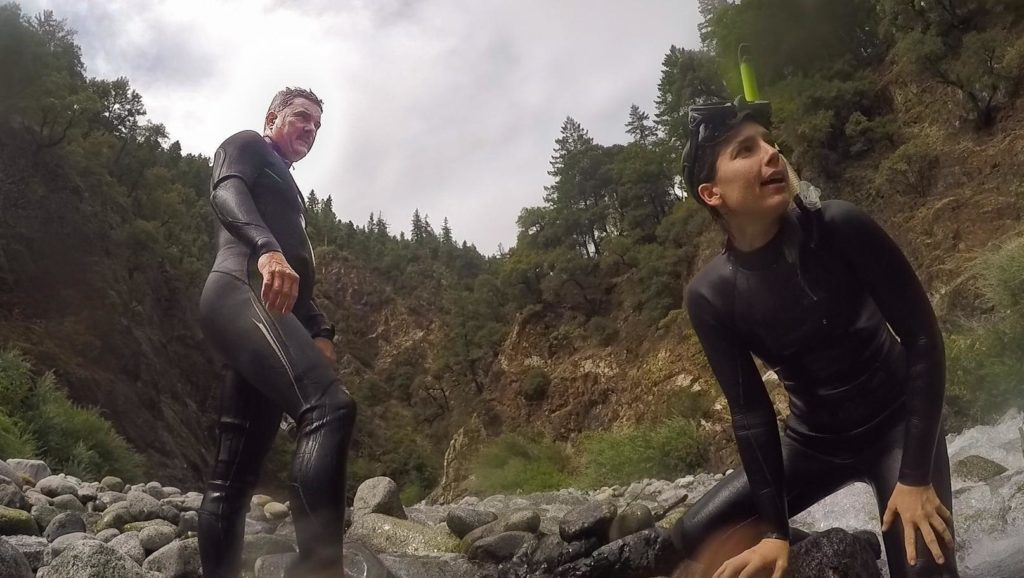

In the case of spring chinook the run update occurs sometime in early May. If we were managing our spring chinook fishery like Alaska it would mean having to wait until May, and the run update, to set the season.
There’s a lot to it. Thankfully, for us spring chinook anglers, we can leave it up to the States to figure out the science while we spend our time figuring out how to catch them with the season we have.
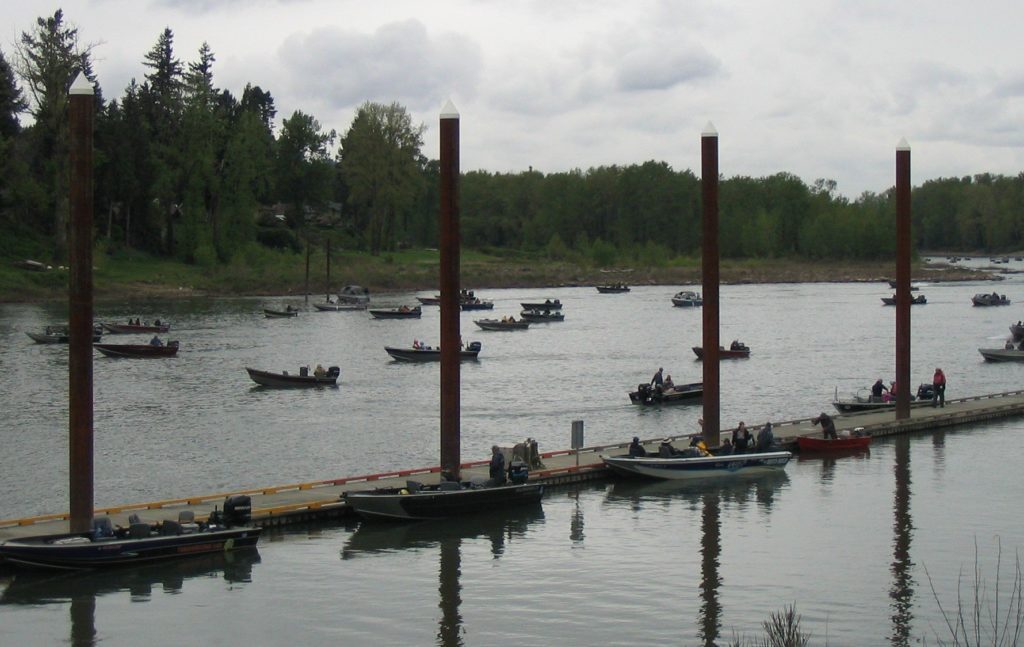

And for sure, the plight of Northwest salmon and steelhead isn’t all about the impact of sportfishing. The challenges these fish face seem almost insurmountable with massive predation, too many dams, habitat degradation, warming water, acidification of the ocean and poor ocean conditions, depletion of forage fish and the list goes on.
The fact is, controlling harvest is one thing we can control with relative ease. That’s not good if you like to fish for these wonderful salmon but it is one thing we can do to assure their future while real, long term solutions are explored and brought to the table.
Appreciating our role in this recovery effort gives anglers a snapshot into the complexity of managing these stocks that are challenged in so many ways. Fortunately, there’s good news. We have fisheries that are still vital and relatively unencumbered by restrictions.
The Willamette has been very reliable the past 20-plus years with no threat of closures. There was a time however that wasn’t the case but it’s good to be by all that and have a river we can fish 7-days-a-week for months and months.
There are other springer fisheries too. They pale in comparison but they’re still noteworthy. The Rogue River has a solid fishery and those fish are on-par as tablefare with Columbia basin springers. Tillamook Bay is another. It’s a short fishery, mid-May to early June and just a couple thousand returning salmon but they’re gorgeous fish and full of fat just like their cousins to the north.
Our program is to get started late. We generally start fishing sometime late in April, around the peak of the return, and fish through May, June and into July. Might as well fish when the fishing’s best and for us this is when it’s best.
That first fish is always remembered for a dozen or more trips because it lands in the smoker and becomes the centerpiece for our trips where we nosh on bagels, cream cheese and smoked springer in the morning with thick coffee and rods bending against the pull of our flashers and bait. Later on it will be spinners.
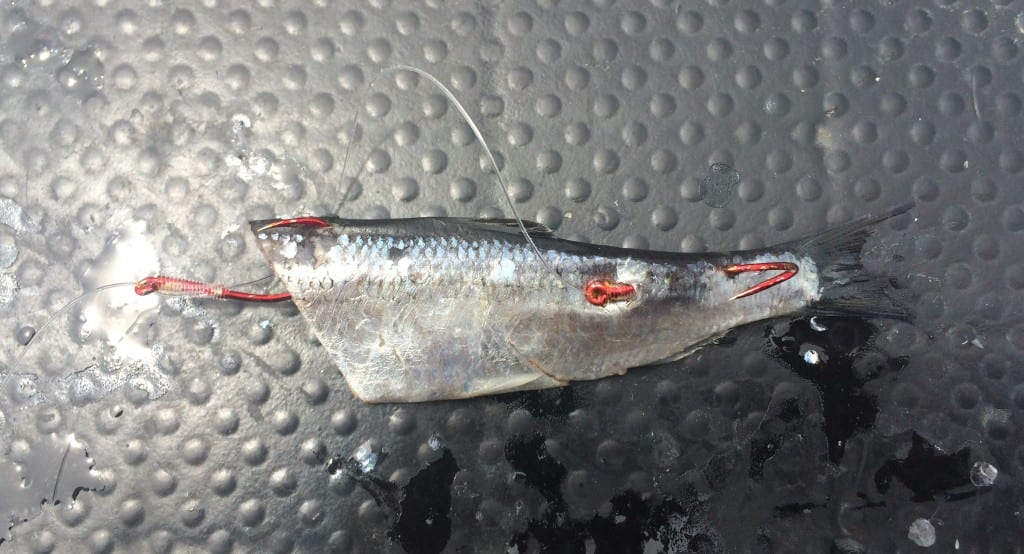

We use every year, and there have been more than 40 of them now, as a learning experience. This year we’ll fish more Brad’s Super Baits along with our spinners and we’re also going to try some of those Shrimp Guys prawn spinners produced by our friends at Poulsen Cascade. Of course, we’ll have enough 3.5 VIP spinners to fill a small tackle shop — we really like those red and white cascade blades with the small pink hoochie and that Mexican Flag spinner with a Colorado blade is another tried-and-true choice that will always be in the water in June and July.
Stay tuned, we’ll be providing more updates and info here as we get deeper into the season. Until then…fish on!